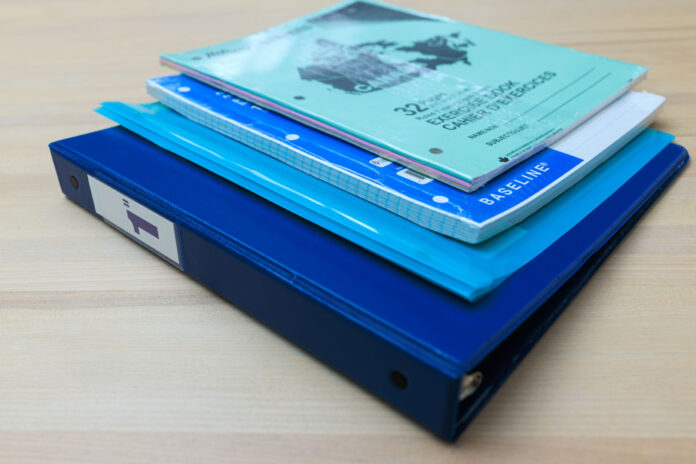(Toronto) Stationery aisles are expected to be busier this year as parents and students resume in-store shopping for back-to-school essentials, though their baskets may be a little less full .
This annual shopping ritual comes as rising food and housing costs weigh on the optional spending plans of many households.
According to a Retail Council of Canada survey, about 73.6% of people shopping for back-to-school items plan to spend more than $50 this year, up from about 77% last year.
While shoppers expected to spend more on clothes, books, music and electronics last year, this year stationery is expected to be the largest spending category, with 61% of consumers saying it is where they will spend most of their money on back-to-school shopping.
Last year, stationery didn’t even make the top ten categories in the survey, which surveyed more than 9,000 Canadian adults on Caddle’s mobile platform and online panel and whose margin of error is 1% or less.
The results show that Canadians are more cautious about spending, but still plan to buy what children need for school, observed Michelle Wasylyshen, spokesperson for the Retail Council.
“People are still spending… they’re cautious, but they’re willing to spend when it matters. »
The survey also revealed that 81% of shoppers plan to visit stores in person this year, a notable increase from the 41% who said the same last year.
“The tradition of family visiting the store to stock up on back-to-school supplies and clothing is back in full force,” Ms. Wasylyshen said.
Other surveys show that the rising prices and high interest rates that the Bank of Canada is using to try to slow inflation are becoming harder to bear.
In a NerdWallet questionnaire, 27% of respondents said they would buy fewer school supplies and more than half would look for the discounts.
The Harris Poll of 303 Canadian adults, with a margin of error of 6.4%, finds shoppers plan to spend an average of $524 on back-to-school purchases.
Shannon Terrell, personal finance expert at NerdWallet, said in a statement released with the data that it’s easy to overspend on back-to-school purchases, so it’s important to plan ahead to curb the urges to do so. excesses and keep control of your finances.
Another Capital One survey found that 45% of Canadian households earning less than $60,000 forego essential items, and 80% of households in that income bracket forego optional but useful items.
Overall, 57% of respondents said thinking about what they spend on their child(ren) stresses them out, with 64% of women and 49% of men agreeing.
These results align with retail analyst Bruce Winder’s forecast for this shopping season, and underscore the need for retailers to respond accordingly.
“They will be buying fewer discretionary items and more essential items, so retailers will be offering quite aggressive promotions. »
If students see certain items as essential, parents may see things differently this year.
“Discretionary items are all about whether you really need that extra top or those new rhinestone pants. You know, fashion items,” he added.
He expects more shoppers to turn to dollar stores and online thrift sales, as well as cheaper options such as Shein and Temu, even if fast fashion apparel won’t. don’t last as long or aren’t as good for the environment.
“If you’re like most people who have to be careful with their money, then yes, they’re willing to give up some quality to get through this…and they’re probably willing, even if they don’t like it.” , to put aside some of their environmental concerns,” Mr. Winder pointed out.
However, shoppers under pressure from general inflation may be pleasantly surprised by the price movements of some key back-to-school items over the past few years.
Prices for children’s clothing have fallen by approximately 5.4% over the past three years to July 2023, while children’s footwear has increased by just under 6%.
Textbooks and school supplies, which include pencils, ballpoint pens, notebooks and other essentials, increased by just under 4%.
Electronic devices, the demand for which has exploded during the pandemic, have seen their prices drop significantly, both because of the improvement in their quality and the evolution of their purchase price. What Statistics Canada calls digital multifunctional devices have declined by about 21% over the past three years.
But while some of these price trends may help, the general propensity for inflation, combined with Canadians’ dwindling cash reserves, means the hitherto surprising strength of consumers is likely to weaken this season, according to Mr. Winder.
“I think we’re starting to see that strength fade, just because there’s too much headwind. »















